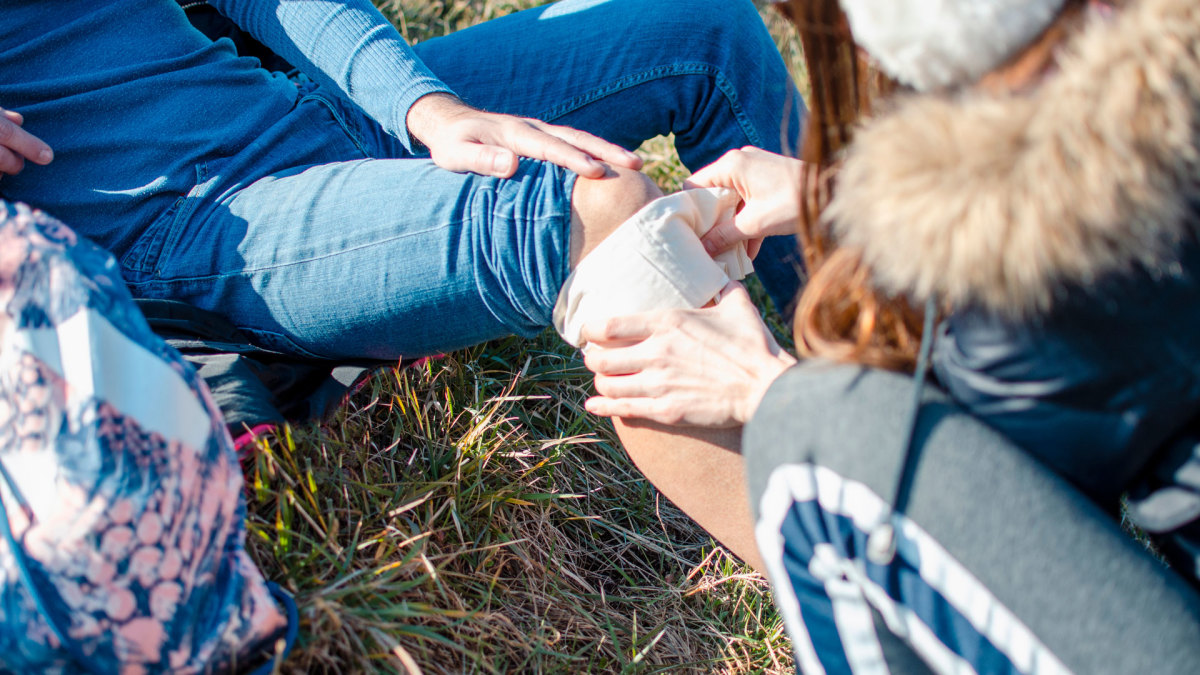Meet Jenna Nodding. She is an Association of Canadian Mountain Guides (ACMG) hiking guide and physiotherapist. She has had six different surgeries on her own knees—two ACL surgeries, a posterior lateral reinforcement, and a couple arthroscopics thrown in. (Needless to say, she has some personal experience.)
She has hiked all over the world from the Arctic to China. She guides 150 days a year and can gain and descend thousands of meters a day. When she isn’t guiding, she works as a physio with athletes and recreationalists, getting them healed and strong from various injuries.
Here are some tips on how to prevent injuring your knees while out on the trail.
The Common Problems
Photo: maxpro/Shutterstock
Heavy packs: Seems obvious, but having a too heavy of a pack can do damage on your knees. Whatever you can do decrease your pack weight will certainly help your knees.
Poles: For backpacking trips Jenna recommends using poles—but with a word of caution. Many people make the common mistake of leaning too far forward when using poles. This can actually place more stress on the knees. Instead, it’s important to sit back in your hips and use the poles for extra balance and to help lower your body when going over steps.
Not sitting back in your hip going downhill: Unlike skiing, when going downhill, sitting “in the backseat” is actually good for your knees. So many people don’t use their glutes to slow them down and they have their knees too far forward, which puts too much pressure on the backside of their knee cap. This may lead to knee pain.
Preventing Knee Injuries
 Photo: Pearl PhotoPix/Shutterstock
Photo: Pearl PhotoPix/Shutterstock
Jenna can’t say more about this: Knee injuries are rarely about the knees, instead they stem from weak hips.
Classic clamshell exercise: Laying on your side with your knees bent 30 degrees and ankle stacked. Lift the top knee away from the bottom knee while keeping the hips perfectly still. Commonly, people will let the hips rock backward allowing them to cheat. Don’t take the easy road, work the right muscles and get yourself strong.
Bridges: Perform laying on your back, bend your knees so that your feet are on the floor and close to your buttocks. Contract your core, squeeze your bum, and lift your hips up off the ground so that your knees, hips and shoulders are in a straight line. To make this more difficult, straighten one knee so the foot is off the ground and perform single-legged. Focus on keeping your hips level throughout the movement.
For a more challenging exercise, try single leg squats: The key here is to focus on keeping your knee from wobbling from side to side and sticking your bum out and back as you bend your knee.
A dynamic warm up: “People tend to underestimate hiking, it is always good practice to do a little warm up prior,” Nodding tells us. “Just take the joints their there available range. What this does is lubricate the joints, activates your nervous system and then wakes your body up for the activity that it is going to do.”
Some examples are just doing ankle circles. Leg swings—forward and back and side to side. High-steps and butt kicks are simple and easy, too.
Sit back: When hiking, start like a squat. This allows the first of your hips to relax so that your hip flexors aren’t over-engaged. This allows for your glutes to contract which stabilizes your upper leg.
For access to exclusive gear videos, celebrity interviews, and more, subscribe on YouTube!
source https://betterweightloss.info/how-to-prevent-knee-injuries-while-hiking-according-to-an-expert/


No comments:
Post a Comment